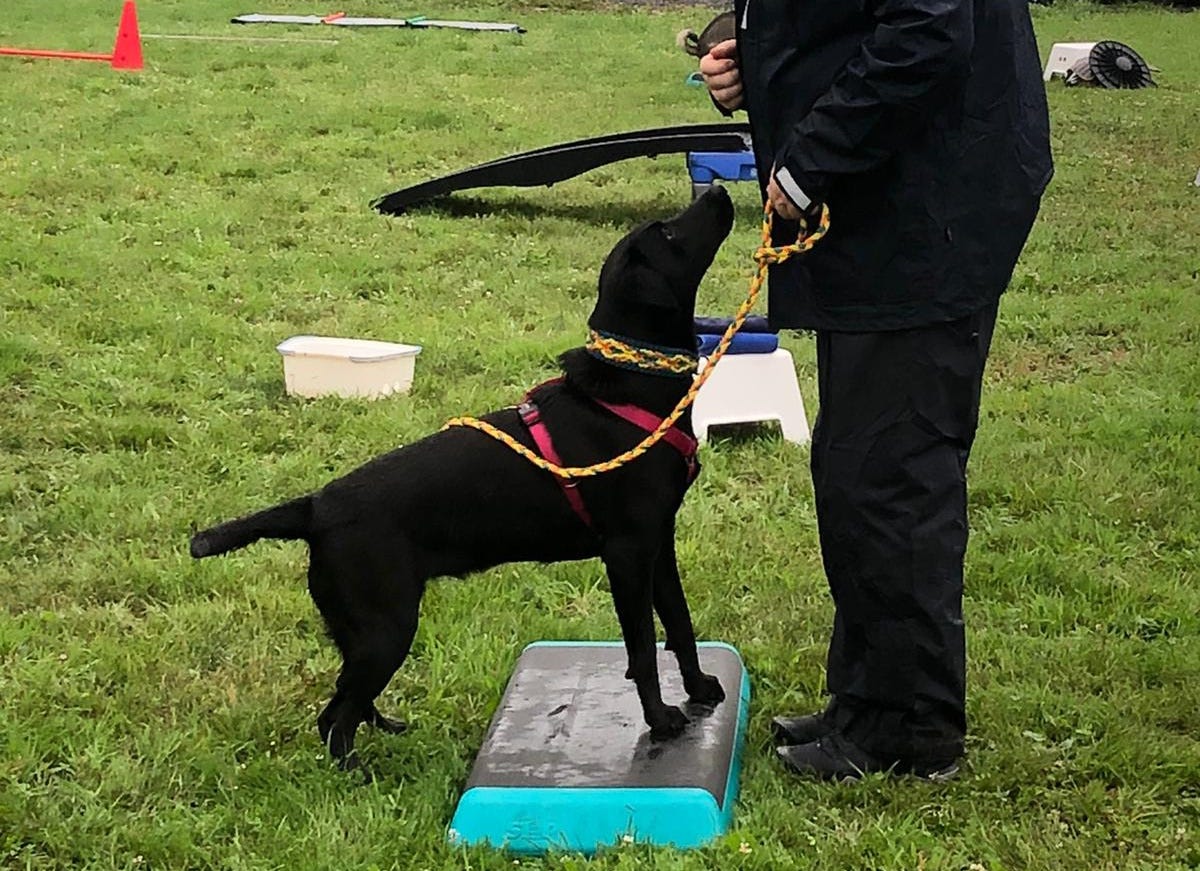Ban the crickets: Your secret weapon against overwhelm & being ignored
Agile practices for one (#2) — the harsh truth about crickets feasting on your work and what a Definition of Done can do about it for you.
You know, right, that hitting “publish” is just the first step for a writer? That if you’re after recognition, impact, or revenue, you’ll need to promote each piece and yourself with monotonous regularity?
And, creators tend to procrastinate on that. Not only because it’s not fun and not creative, but because we have plenty of hang-ups around it.
Let me tell you a story and then introduce you to the practice from my former career that’s helped me beat that (though more consistency would still not go astray).
Storytime
When I hit publish, I used to ignore the page with Substack’s sharing suggestions, and go straight to the article to read it one final time.
Euphoria would wash over me. As usual, the sidenote1 had been long overdue and had taken me longer than anticipated. Relieved it was finally out there for everyone to enjoy, I decided Nina2 and I deserved a long, leisurely walk in the woods.
It was great.
Though the euphoria subsided slowly, my sense of accomplishment remained strong.
Until a few days later.
To say I was disappointed when I saw the open and view rates, doesn’t do justice to what I felt. I don’t usually pay much attention to stats — of any kind — but they’re hard to avoid on Substack and this time it hit me hard.
Crickets
I don’t like them.
Oh, the creatures are fine (if I don’t have to eat them and they don’t come in a swarm) but figuratively speaking they are demoralizing at best.
Now, before you start doubting your abilities (like I did), or whether anyone will be interested in what you offer (like I did), or, more to the point, whether anyone would be willing to part with hard earned cash for it (like I did), let’s get real about something.
We love to create.
It’s why we want to start side hustles and dream of living off of the proceeds.
But doing what’s needed to get those proceeds? Or any other pay off? Whether that’s recognition, impact, revenue, or all of them?
We hate that.
So you procrastinate (like I did).
You’ll do it tomorrow. Next week. You’ll start when you have enough articles to add some variety to your social media posts. When generating revenue becomes more pressing. Or when even the crickets have gone deafeningly silent.
The truth?
You attract the darn crickets
expecting the world to find you and your creations without any help from you.
Creating is only the first step
Creating anything is only the first step in doing what it takes to make your creations pull their weight in helping you make the difference you crave.
You’ll have to promote your creation. And, yes, yourself at the same time.
It’s an essential step — one you can’t do without3 — however unsexy and uncomfortable, sleazy and undesirable it may feel.
Apart from the bad examples4, what’s keeping you from promoting, marketing, and selling, are all the messages about it you’ve heard, adopted, and repeated ever since.
The truth is, they are wrong, unhelpful, and counterproductive to your success.
Because, let’s face it, no one will read, look at, or share your stuff unless they come across it somewhere. And no one can, if you don’t tell at least one person about it.
Someone has to promote you. Who better than yourself? After all:
You’re the only one on this earth
who has a 100% interest in your interests.
Put in the reps
So, get over the discomfort and tell the world about your creations.
However, short of an epiphany, it would take a lot of self-work to shift your emotions. So, I wouldn’t bother. There’s a simpler, quicker way: put the reps in. It gets you comfortable doing anything simply by doing it often.
The way I did it was to acknowledge the emotions and then pull a Nike: “just do it”.
Once. Then once again. Then one more time. And another, and another, and another. Soon enough, the discomfort starts fading.
You’re doing it. Victory!
Not so fast.
Problem is, without that self-work, the message tapes feeding your discomfort have not been erased or recorded over. As soon as the going gets tough(er) the tapes and the emotions pipe up again.
Full blast.
So, you need some extra insurance. Something to keep you from falling of the wagon. Something to keep you at it, until…
The fat lady sings
You’ve probably heard this phrase before:
It ain’t over till the fat lady sings.
(The phrase refers to her — the fat lady’s — farewell scene5.)
It’s intent is to keep you from assuming that the end of something is fully determined long before you get there.
I’ve hijacked it to mean: you’re not done until you’ve done every single thing you need to do with and around your creation to reach your goals with your work.
How do you know you’re well and truly done?
By defining what “done” means. Beforehand.
In agile6, this is known as a Definition of Done (or DoD for short).
Definition of Done: more than a checklist
A more down-to-earth name would be… — drum roll, please — checklist.
So why call it a Definition of Done?
Because a checklist feels way too non-committal.
A Definition of Done states exactly what will have been done when a piece of work is declared “done”. It’s an agreement, a contract (even if only with yourself) that offers clarity and transparency.
There’s more, so, let’s dig into the benefits.
Benefits of using a Definition of Done
Here are the benefits I’ve found most appealing:
Creates clarity around what's in and what's out of scope.
For example, what does it mean that a piece is finished? Has it been edited? What did you look at? Does it have visuals? Have they been checked against your brand guidelines?
Maintains consistency.
Avoids running yourself ragged. You’re far less likely to overestimate what you can accomplish, giving you more confidence to say 'no(t now)' to (client) work.
Avoids the overwhelm of bulldozering “not-so-fun” tasks into an insurmountable mountain ahead of you.
Helps manage expectations. For clients and collaborators. Also, perhaps even especially, when you work alone.
Mistakes to avoid
If I have persuaded you that a DoD is a good idea and you’re raring to go… Yay!
But hold on to your horses a little longer so I can tell you what mistakes to avoid.
Cramming everything and the kitchen sink into your DoD from the “get go”
Don’t turn your DoD into a wish list. Make it the non-negotiable list of things you will do, no matter what.
Negative outcome of this mistake: disillusion and throwing the baby out with the bathwater.
Solution: Start small and with the big rocks. Your first version may well have a single item: Publish! You can add things and expand them later.
Changing your DoD as the mood strikes you
A DoD isn’t written in stone. It is supposed to with your priorities and methods. But don’t change it all the time. Also because of mistake #1.
Negative outcome of this mistake: negates all the benefits of using a DoD.
Solution: Re-assess and adjust your DoD on a cadence, a cycle. Bear in mind your DoD defines the minimum standard for your work. You’re free to do more and that means you’re free to experiment and decide later!
Including future actions
Don’t include anything you can’t complete together with everything else.
Negative outcome of this mistake: Cluttering your work list with stuff you can’t take action on, and robbing you of the satisfaction of getting to “done”.
Solution: Change the action in your DoD from “doing” to “scheduling” X. For example, instead of “publish a promotional post” have 1) draft promotional post; 2) schedule post using a social media scheduler; 3) create a to-do to copy the post to platforms that require manual posting.
Including what you don’t control
In other words: any result you can’t or don’t want to create yourself.
Negative outcome of this mistake: Frustration is the kindest word for what happens while you wait. And what if what you get isn’t up to par?
Solution: Split it up. For example, one DoD for the whole with 2 parts: 1) for what’s under your control — include sending work to the others here; and 2) one for what you’ll receive from others. The latter detailing what you need to check to ensure it’s up to par and to integrate it with everything else.
Ban those crickets
There you are. You now know how to ban the crickets, how to avoid feeling done when you really aren’t yet. And that’ll help you make the difference you’re after. Whether that’s recognition, impact, or revenue.
Your first steps:
Create your first, short and sweet Definition of Done.
Set up a schedule to reflect, re-assess, and adjust it.
Stick to it!
Enjoy!
What you’d call it an article or a post. But hey, this publication’s name is 42 Sidenotes, so I write sidenotes.
My gorgeous, mischievous, well-behaved, ravenous, silly, anxious, fun-loving, hard-working, courageous, black Field Trial Labrador.
Unless you’re only writing for yourself. And then I’d ask you: why are you doing it in public?
Like disreputable (car) sales people and TV channels like Tel Sell.
The “fat lady” refers to valkyrie Brünnhilde in Wagner’s opera cycle “Der Ring des Nibelungen“, and “till … sings” to her (very long) farewell scene that leads directly in to the finale of the entire cycle. See Wikipedia on this.
Agile is a way of working that’s ubiquitous in the software world even if it’s often not practiced very well or effectively.









I totally agree with you that publishing something is not the same as getting it done. But the done thing remains ever elusive. You can do lots of things but in the sense of done being the things that helps you reach your goals, it feels as if I am forever destined to be a thin lady with a sore throat.